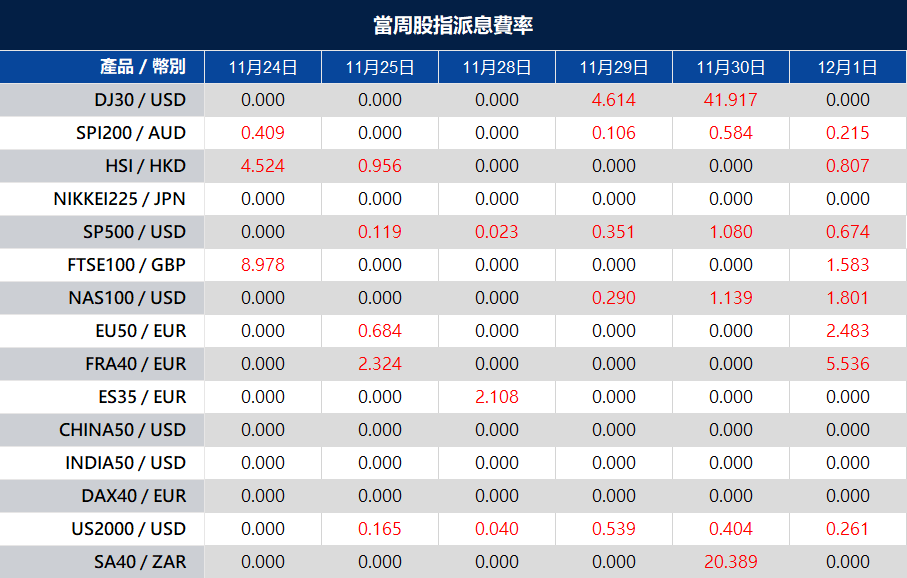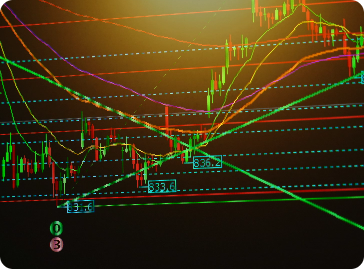US markets were closed due to the Thanksgiving holiday on Thursday, meanwhile, trading volumes are lower due to the holiday with no cash US equity market trading.
The Meeting Minutes from the Fed earlier this month indicated several officials backed the need to moderate the pace of rate hikes, which adds to expectations the central bank will raise rates by 50 basis points next month and end a run of jumbo 75 basis point increases. European stocks gained upside traction and climbed higher after Federal Reserve meeting minutes showed support for more moderate interest-rate increases.
The market mood was upbeat as Asian and European indexes closed in the green but some worrisome headlines may soon trigger a flip in investors’ sentiment. China reported that Beijing and other cities are going back into lockdown amid record coronavirus contagions in the country, which raised concerns that Chinese restrictions could interrupt global commerce and trigger fresh supply-chain issues.
On the Eurozone front, the German IFO Business Climate Index improves to 86.3 in November, which came in better than the market expectation of 85.0. Germany will release the December GFK Consumer Confidence Survey on Friday, foreseen at -39.6 from -41.9 in the previous month. On top of that, tensions between Russia and the EU continue to escalate, as European Commission President Ursula von der Leyen announced they are working full speed on a 9th sanctions package on Moscow.

Main Pairs Movement
The US dollar declined slightly on Thursday, remaining under pressure and extended its weekly decline against most of its major rivals amid a generally upbeat market mood. The greenback was dragged down by the latest FOMC Meeting Minutes, which hinted at a potentially more discrete rate hike next December and the Fed might slow the pace of rate hikes after four 75 basis points hikes. The United States will not publish macroeconomic figures on Friday, and local markets are due to an early close.
GBP/USD advanced higher on Thursday with a 0.48% gain as the cable extended its daily gains towards three-month highs near the 1.2150 mark following the FOMC minutes. On the UK front, a hefty 75 bps rate hike from the BoE this month failed to support the pound as gloomy UK economic forecasts still remained. Meanwhile, EUR/USD failed to climb higher and stuck to a range of between 1.0380 and 1.0430 as liquidity is thinner than usual during the Thanksgiving holiday. The pair was up almost 0.13% for the day.
Gold advanced slightly with a 0.32% gain for the day after climbing towards the $1,758 area and remained sideways during the US trading session, as the optimism in the overall market and the falling greenback both provided support to the precious metal. Meanwhile, WTI Oil was nearly unchanged with a 0.03% gain for the day.
Technical Analysis
EURUSD (4-Hour Chart)

The EURUSD continues to trade modestly higher on the day above 1.0400 at the moment of writing, as trading action turns subdued on Thanksgiving day. The US celebrates the Thanksgiving holiday, which means all markets will be closed for the day. Activity will resume on Friday, although US markets are due to close early, meaning little to no activity could be expected ahead of the weekend, with no macroeconomic figures scheduled for these days. Apart from this, the ECB’s October meeting account showed that some members preferred a 50 bps rate hike, but this comment had no impact on the pair. Eurozone inflation data will be released next week, which is expected to show price growth slowed over the course of the month, but remains elevated. While energy prices have come down and supply chain disruptions have eased, natural gas supply disruptions have kept inflation well above European Central Bank’s target. Across the pond, Germany published the November IFO survey. The Business Climate improved by more than anticipated, hitting 86.3 after the October reading was confirmed at 84.5.
From the technical perspective, the four-hour scale RSI indicator figured 62 following touching the critical overbuying level of 70, suggesting that the pair amid strong bullish momentum. As for the Bollinger Bands, the pair was pricing in the upper area and the size between upper and lower bands became larger. Hence, we think the upside movement was the path with the least resistance in the near term.
Resistance: 1.0479, 1.0604
Support: 1.0228, 1.0163, 0.9961
GBPUSD (4-Hour Chart)

The GBPUSD extended its rally and climbed above the highest level since mid-August 1.2152 on Thursday, and the pair now was trading at 1.2117 level as of writing. The British Pound preserved its rising for the third consecutive day, with the US Dollar remaining under the pressure following the FOMC meeting. Expectations that the US central bank might slow the pace of rate hikes after four 75 basis points hikes weighed on the Greenback and boosted Treasuries. The Federal Reserve will likely continue to raise rates as inflation remains elevated and far from the target. The UK’s first readings of S&P Global/CIPS Manufacturing PMI for November reprinted 46.2 figures versus 45.8 market forecasts while the Services counterpart also followed the suit while again flashing 48.8 numbers compared to the 48.0 expected figure. It’s worth noting that the cautious optimism surrounding China’s ability to overcome the Covid woes and readiness for further stimulus appeared to favour the risk-on mood. However, the off in the United States due to the Thanksgiving celebration limited any further movement.
From the technical perspective, the four-hour scale RSI indicator continued to stay in the overbought zone and figured pf crazily high 78, suggesting that the pair were surrounded by strong positive traction. As for the Bollinger Bands, the pair was pricing along with the upper band and the size between the upper and lower bands became larger, meaning that they would move upward if the pair could stand firmly above the two-month high 1.2159 level.
Resistance: 1.2081, 1.2147
Support: 1.1765, 1.1647, 1.1367
XAUUSD (4-Hour Chart)

The XAUUSD is up for a third consecutive day, trading near a fresh weekly high of $1,758 marks as of writing, with the US Dollar remaining on the back foot throughout Thursday and extending the negative traction post-FOMC Meeting Minutes. The document hinted at a slower pace of rate hikes coming, with market participants adding bets to price in a 50 bps increase in December. Nevertheless, investors should know that Federal Reserve Officials are uncertain how high rates will end, with most policymakers expressing that 5% could be the peak. In the meantime, US Treasury yields extended their losses, with the 10-year T-bond yield dropping six bps, down to 3.66%, acting as a tailwind for the non-yielding gold. The US Dollar index (DXY), a gauge of the buck’s value against a basket of rivals, tumbled by 0.2% and priced at 105.9 as of writing. The financial markets’ activity halted ahead of London’s close as a holiday in the US keeps all local markets closed. Wall Street will return on Friday for a shortened session, but Thanksgiving is usually seen as a long weekend holiday, and little could be expected in the upcoming hours.
From the technical perspective, the four-hour scale RSI indicator remained modest growth and printed 56, suggesting that the gold was moving upward at a mild pace. As for the Bollinger Bands, the yellow metal climbed along with the upper band, indicating that the pair was more favoured to the bullish path in the near term.
Resistance: 1748, 1784, 1800
Support: 1704, 1670
Economic Data
| Currency | Data | Time (GMT + 8) | Forecast |
| EUR | German GDP (QoQ) (Q3) | 15:00 | 0.3% |
























